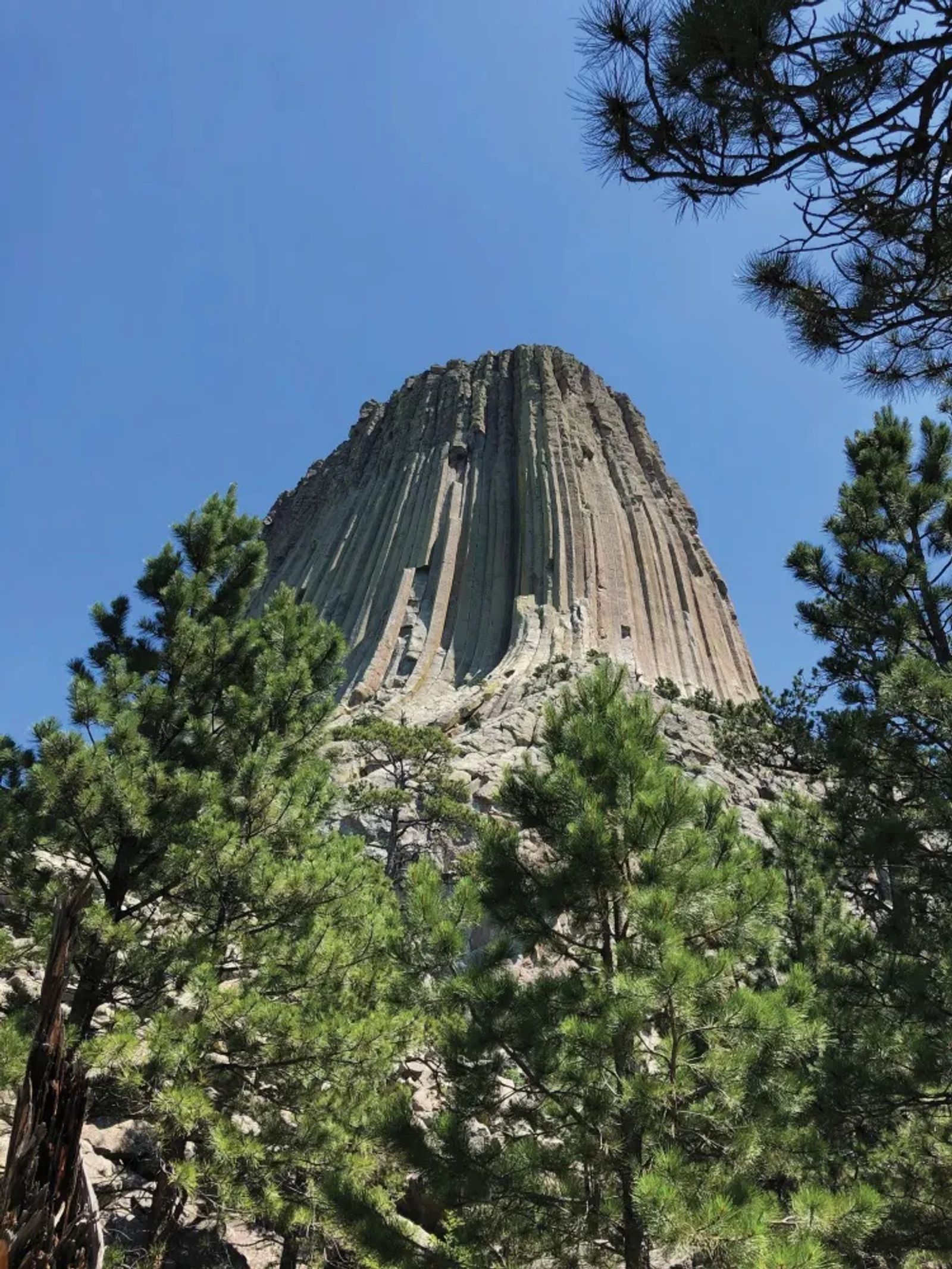
What the Devil? The Secret Behind Devils Tower
July 2020 | article & photos by stephanie hobby
Tucked into a remote corner of northeastern Wyoming, Devils Tower juts dramatically up through the prairie, rising a staggering 867 feet from its base. Almost three times the height of the Statue of Liberty, Devils Tower is breathtaking for even the most seasoned travelers. Many of its visitors have marveled over this gargantuan rock specimen; it's impossible to look at the surrounding landscape and not wonder how on earth the tower got there. It seems spectacularly out of place, resembling nothing close to the gentle rolling hills and prairies nearby.
Established as the nation's first national monument in 1906, Devils Tower's origins have long intrigued geologists, Native Americans, and casual visitors alike. To this day, despite so much study and interest, experts are still baffled about much of its existence.
Sedimentary rock is created when minerals or organic material solidify. If you're fossil hunting, you're most likely picking through sedimentary rock. Wind and water help it form, making up much of the landscape around the tower. Because of that, geologists believe a shallow sea covered the area between 225 to 195 million years ago, during the Triassic Period. The water went through cycles of receding and returning for the next 59 million years, but something drastic was afoot.
Roughly 50 to 60 million years ago, the earth was in the Tertiary Period. It was a very busy time for the earth's tectonic plates. It was during this time that the continents made their way close to where they are today. Sometimes the shifts were explosive, as plates crashed into one another, pushing up mountain ranges. Scientists believe it was then that our beloved Rocky Mountains and Black Hills were born. All of that movement meant volcanic activity was high, and molten rock below the crust surged toward the earth's surface.
Nearly everyone agrees that Devils Tower was made from molten rock or magma, but that's where the certainties end and the fun begins.
One theory from the late 1800s says that magma forced its way up through other rock layers, but the giant blob of hot rock stopped before reaching the surface, creating what's known as a stock. It cooled underground, and erosion eventually washed away the softer rock surrounding the tower, exposing it over time.
A similar explanation is that the magma came up through the surface and ballooned through a weak layer, forcing the surface to bubble up without breaking through. The mushroom-shaped hunk of rock is called a laccolith, and other formations can be seen through the American southwest. In this case, geologists believe erosion would have worn away the edges of the mushroom.
Others believe Devils Tower was the center of a volcano, one or two miles below the surface, with a kind of pipe reaching to the surface, and the tower acting as a plug. However, there is little evidence of other volcanic formations in the area. Still, the evidence could have been a victim of wind and erosion.
Finally, and perhaps the most fun theory to think about, is that the tower was part of a unique kind of volcano known as maar-diatreme. When magma billows up through a crack in the earth's surface and encounters shallow pools of groundwater, the water heats up really, really fast. This superheated steam, mixed with volcanic gases, would trigger a series of explosions. The impressive sight could create a crater in the earth's surface, which would fill with lava, and as it cooled, created a dome shape. The theory is that erosion did its work over the years, shaping and revealing the tower to what we have today.
Another thing to notice at Devils Tower is the peculiar columns on its sides. These columns can be found on other structures worldwide, but where Devils Tower has them beat is their size. Hundreds of feet high and up to ten feet wide, Devils Tower columns are in a class by themselves. It's when you get up close to the tower and scan it for climbers that the columns get really impressive, as you can see just how massive they are.
Known as columnar jointing, these formations can only take place on igneous or volcanic rock. As the magma cooled and solidified - starting with the outer surface - it contracted, forming stress points, which led to cracking. Interestingly, these cracks grew outward in three directions, forming columns with six sides, or in a few instances, five. The hexagon is one of nature's tightest and strongest fits. While boulders occasionally fall from the tower, no column has broken completely off in recorded history.
If you choose to investigate yourself - and you definitely should - it's a four- to five-hour drive from Billings, and the Black Hills and Rapid City are on the other side of the drive. While COVID-19 forced its closure, the national monument is gradually opening to the public. Check the website (https://www.nps.gov/deto/index.htm) before your visit.
Originally printed in the July 2020 issue of Simply Local Magazine
Never miss an issue, check out SLM's digital editions here!





